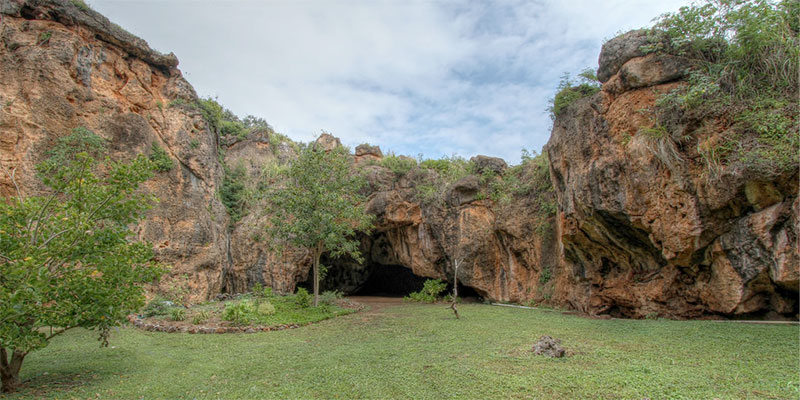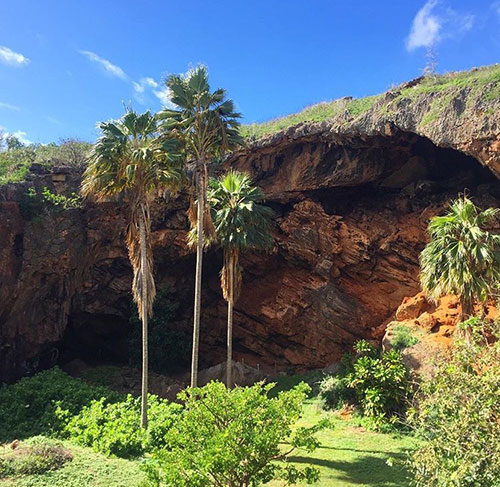
Among Poipu’s glorious beaches, award-winning golf, and numerous rainforest adventures is a hidden wonder that dates back to pre-contact Kauai. Makauwahi Cave is a limestone cave that took over 400,000 years to form, through the hardening of an ancient sand dune that over time turned to stone. Approximately 7,000 years ago, as groundwater slowly eroded the limestone and dripping water flowed down the walls molding flow-stone formations, the ceiling in the cave’s central room collapsed, creating a freshwater lake in the cave.
How to get there
Located just beyond the Poipu Bay Golf Course and CJM Horse Stable is a short sandy trail that leads to the cave. From 80 feet above, the cave will arouse your curiosity and make you wonder how this sinkhole in the middle of nowhere came to be. Paleocologist David Burney and his wife Lida Pigott Burney were equally curious on the history of the cave and have spent two decades uncovering the caves secrets. Their findings have been nothing less than extraordinary!

A narrow entrance will take you into the Makauwahi Cave, which is a treasure trove for historical artifacts dating back to prehistoric Kauai. The fossils of plants and animals can be found within the limestone crevices. Sediments spanning 10,000 years tell stories of floods, droughts, tsunami, hurricanes, and the animal and plant life that existed. Indigenous birds, insects and plants – many of which are now extinct, once inhabited the cave – coexisting with one another. Blind cave spiders and other invertebrates still reside within the maze of underground lava tubes that start at the entrance of the south cave. It is not recommended that people go beyond the entrance for risk of causing harm to the fragile ecosystem and to respect Hawaiian cultural practices.
Today, Makauwahi Cave is a 17-acre park due to the efforts of the Burneys, reserve caretaker Joe Kanahele, landowner Grove Farm Company, and the hundreds of volunteers who have spent thousands of hours excavating and restoring the cave. Once overgrown with non-native plants and other invasive species, the cave is now thriving with nearly 5,000 native and Polynesian plants that were reintroduced using fossil record as a guide of what to plant.
Free Tours
If you are fortunate enough to be there on a Wednesday, Friday, Saturday or Sunday, free guided tours are available from 10 am to 2 pm. Tours are available on other days by appointment. Visitors are also welcome to enter the cave on other days if the gate is open. Rules for visiting the cave are simple, dogs should be left outside on a leash, give the horses the right away when standing above the cave, and do not damage the native plants. The rest is for you to explore and discover.
